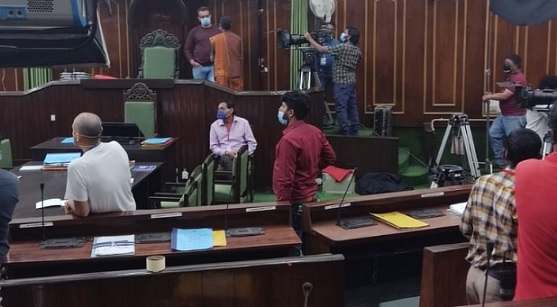The legislative history of Jammu and Kashmir will be 90 years old when the recently elected members of the J&K Assembly take oath in Srinagar on 21 October.
Interestingly, the All Jammu and Kashmir Muslim Conference led by Sheikh Mohammad Abdullah emerged as the largest elected party in the first Praja Sabha in 1934 and his grandson Chief Minister Omar Abdullah with his National Conference (NC) as the single largest party will take oath as an MLA 90 years later on 21 October 2024.
The princely Jammu and Kashmir had the privilege of having an elected Assembly (Praja Sabha) when people in most other places did not have any forum to raise their voice.
Maharaja Hari Singh established a Franchise Committee under the chairmanship of Sir Barjor Dalal on 31 May 1932 to make recommendations for establishing a Praja Sabha (literally, “Subjects’ Assembly”) in the State. The recommendations came a year later with the proposal for a 75-member Assembly in which 33 would be elected members, 30 would be nominated members and 12 would be officials.
The first election for a legislative Assembly called Praja Sabha was held in 1934 in the princely state of Jammu and Kashmir in the British Indian Empire. The Praja Sabha was to have 75 members, of which 12 would be officials, 33 elected members and 30 nominated members. The election was held on 3 September 1934.
The All Jammu and Kashmir Muslim Conference under the leadership of Sheikh Abdullah was the largest elected party with 16 seats won. A ‘Liberal Group’ championed by the Dogra Sadar Sabha had the overall majority in the Assembly with 24 members.
Only six prominent journalists were invited for the inaugural event of the Praja Sabha on 17 October 1934 and cover the proceedings of the house from 18 October 1934. These journalists were; Mr. BP Sharma (The Tribune & Times of India), Mr. Powell (London Times), Col. Johnson (The Statesman & API), Pandit Prem Nath Bazaz (Haqiqat), Mr Abdul Majid Qureshi (Pasban) & Pandit Ganga Nath Sharma (Ranbir). Mr. Qureshi migrated to Pakistan in 1947.
According to his memoirs in the documents in the library of Late Mr. BP Sharma, “The venue of the Praja Sabha inauguration was the Durbar Hall in the Rajgarh Palace, Srinagar. All nominated and elected members were dressed in black Achkan (a knee-length coat) and saffron turbans”.
“Even Sir Barjor Dalal, the first Indian ICS, who was the President of the Praja Sabha wore the same dress. Arrival of Maharaja Hari Singh was announced by sounding trumpets and all members stood up to greet him”.
Mr. Sharma has recorded that “In course of his proclamation, which he himself read out, the Maharaja said; Out of the great love and affection we bear for our beloved subjects, we have called you to do your part in working for the wellbeing of the State”.
After the proclamation, Sir Barjor rose to present his “Nazrana” to the Maharaja. He was followed by all members one by one.
“The following day when the first session of the Praja Sabha began, all members took oath of office and allegiance to His Highness the Maharaja, his heirs and successors”.
Mr. Sharma recorded in his comments “The Praja Sabha was no doubt the first milestone on the path to democracy”.
“In 1939, the Maharaja promulgated a new Constitution. The number of elected members in the house of 75 was raised from 33 to 40. The Praja Sabha was given the right to elect a Deputy President from its non-official members.
